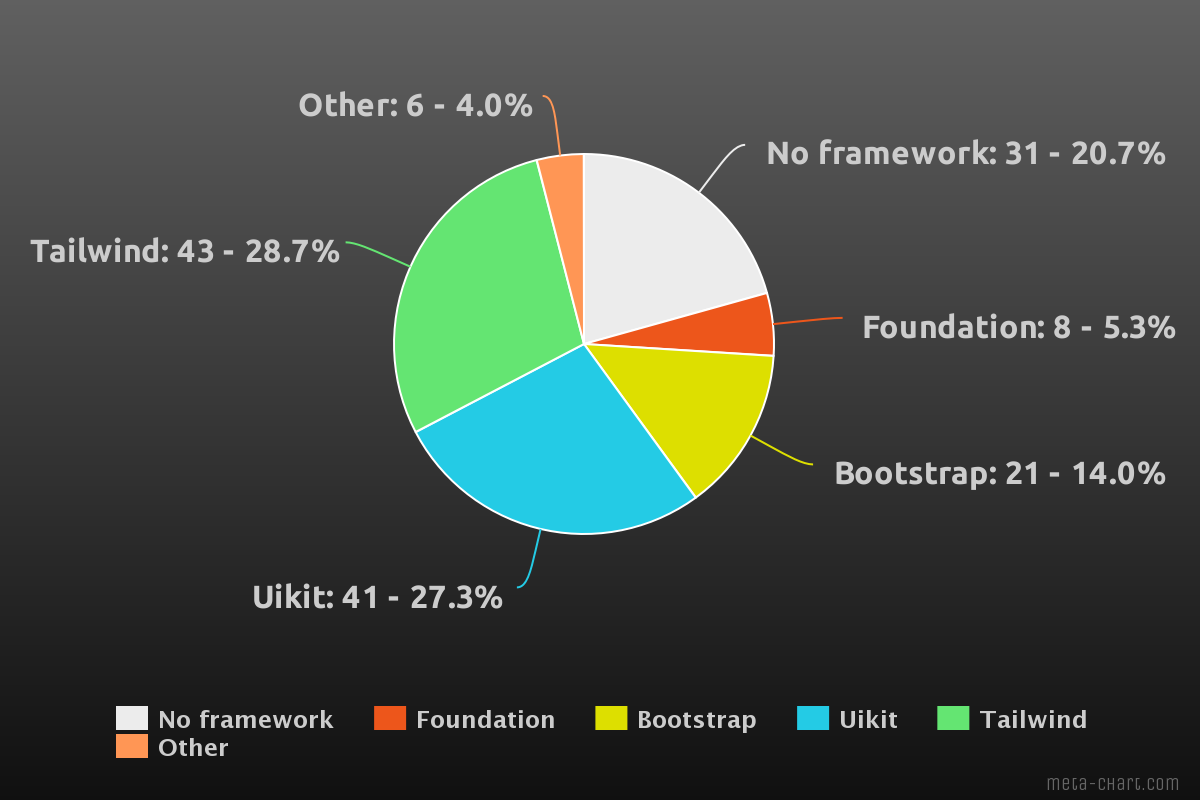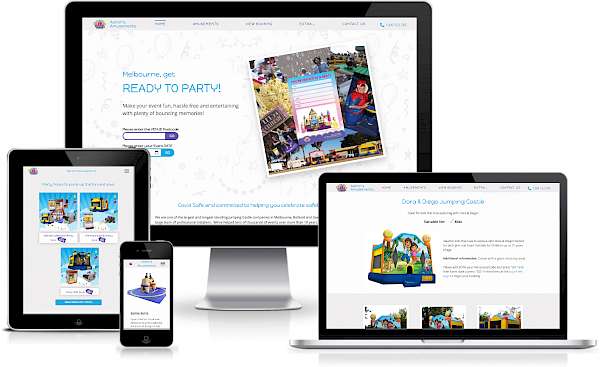In the 348th issue of ProcessWire Weekly we're going to check out the first version of the new roadmap for ProcessWire, talk a bit about front-end frameworks, and introduce a new site of the week. Read on!
Welcome to the latest issue of ProcessWire Weekly! In this week's issue we're going to check out the first draft version of the roadmap for ProcessWire — while it's still very much a work in progress, so far the list of planned features looks fascinating.
In other news we've got the results of the front-end framework poll we posted at the end of December 2020. There are many familiar names in there, but the real star is no doubt the newcomer Tailwind, which has gained some serious momentum among ProcessWire users. Interesting times indeed.
Finally, we've got a new site of the week, developed by Clip Magic for a Melbourne based company Aaron's Amusements. More about that in just a bit.
Thanks to all of our readers for being here with us again, and as always, any feedback is most welcome – please don't hesitate to drop us a line if there's anything in your mind you'd like to share with us. Enjoy our latest issue and have a great weekend!
Work in progress roadmap for next year — and probably years ahead
In his latest weekly update at the support forum Ryan shared a preliminary, work-in-progress version of the new roadmap for the ProcessWire project. In this issue we're going to list the main points from that list.
Items on our preliminary roadmap
Please keep in mind that the items you see here are indeed preliminary; some may change, others may be dropped, and more could be added. There are also items that are likely to continue for years into the future. Anyway, here are the items — main themes — currently on the list:
Flexible content or page building
While one can already build tools for managing flexible content with either core features (PageTable, Repeater, or just regular pages) as well as Pro modules (such as Repeater Matrix), this whole theme that deserves more attention in the future.
Admin theme improvements
Another area of focus is going to be customizing and extending Admin Theme Uikit. The details are still being figured out, but this will likely include new options and/or presets, and perhaps more flexibility in terms of custom extensions.
Pull requests and feature requests
One ongoing theme is getting more community members involved in the actual development process through code contributions as well as feature requests.
External API
ProcessWire already has a world-class developer API, but another loosely related theme is an external API, something that can be accessed by JavaScript as well as other third party tools.
File/media manager and more file sharing options
Community members have expressed interested in more flexibility regarding asset management, including shared file/media manager and being able to more easily reference assets between pages.
External file storage
Storing ProcessWire assets externally is something we've taken steps towards already, and this work can hopefully continue in the near future.
Live preview and auto-save
At the moment live preview and auto-save can be introduced to a ProcessWire site via modules such as ProDrafts, but these could also be potential core additions in the future.
More multi-site features
Extending core multi-site capabilities is the last item on our list. The details are open, but Ryan has suggested that this could perhaps have something to do with our built-in language support as well.
There are more details about the items listed here in Ryan's post. If you have feedback or additional suggestions, you can also post them at said thread. Oh, and be sure to check out earlier discussion regarding this theme from last week's update as well!
Front-end frameworks preferred by ProcessWire developers 2020-2021
Back in December, in our 346th issue, we asked about the front-end frameworks that our readers currently preferred. The results for that poll are now in, and we'll dive in in just a bit — but first a little blast from the past.
We've asked the same question before, in our 155th issue from April 2017. Back then the top result were Uikit, no framework at all, Bootstrap, and Foundation. Many voters also told us that they chose the framework entirely based on the project at hand.
So, how have things changed in the past three, or nearly four, years?
Much remains the same, while a brand new breed of front-end frameworks has introduced a disruptive change
On one hand there is indeed one major change, while on the other hand a lot has also remained the same. Following graph depicts the front-end frameworks currently preferred by ProcessWire developers:

There are familiar names on that list, and even their relative order is exactly the same: Uikit is still the most popular "classic" front-end framework, closely followed by the no framework at all option, and then Bootstrap and finally Foundation. That being said, at the very top of our list is a newcomer: the utility-first framework Tailwind.
2020 was the year of utility-first frameworks
For anyone not familiar with the concept, the big difference is that whereas traditional front-end frameworks provide pre-built components, utility-first frameworks do not. Instead, they provide a plethora of tiny, "atomic" utility classes. Examples from Tailwind include the likes of pr-4 for padding-right: 1rem and text-sm for font-size: .875rem.
While it's interesting to see how much momentum this approach has gained among our community, it's not really surprising. The State of CSS 2020 reported similar findings: not only did it list Tailwind as the single most popular CSS framework, utility-first is now the most popular CSS methodology, having surpassed both BEM and ITCSS.
It's probably too early to say if this is a long-lasting trend or if it'll fade in a few years, but nevertheless: if you're unfamiliar with utility-first approach, it's time to dig in. You can find some related discussion and helpful tips from our very own support forum.
Thanks for everyone who voted. It's always interesting to see and hear what's going on in our corner of the Internet. And if you happen to have ideas for future polls, please do let us know — we're open to suggestions!
Site of the week: Aaron's Amusements
 Our latest site of the week is that of Aaron's Amusements, a Melbourne based company offering all sorts of amusements for their customers: jumping castles, mechanical bulls, sumo suits, outdoor games and popcorn machines — and so much more.
Our latest site of the week is that of Aaron's Amusements, a Melbourne based company offering all sorts of amusements for their customers: jumping castles, mechanical bulls, sumo suits, outdoor games and popcorn machines — and so much more.
The site of Aaron's Amusements has a lengthy history when it comes to ProcessWire. You can read all about it from the showcase forum thread, but the long story short is that the initial version of the site was developed with ProcessWire 2.x many years ago, but has since gone through major updates and rewrites more than once. Current version of the site was built by Clip Magic and (re)released in 2020.
There are some regular content pages here, but the focus of the site are the products, of which there are a lot: pretty much everything you could imagine needing for a party and then some. Some of the products available for rent are for kids or teenagers, while others are for adults, so there's something for everyone.
... oh, and did you know that there are jumping castles for adults? The more you know.
Current design of the Aaron's Amusements website is fun and somewhat quirky, and undeniably a big step forward compared to the previous version. Some of the third party modules working their own magic behind the scenes include ProCache, ProFields, FormBuilder, RockMarkup, and SeoMaestro. For a complete list of modules and other behind the scenes details, be sure to check out the showcase thread.
The site is fully responsive and the only JS used is on the View Booking page when a customer alters the booking item qty. There is NO frontend presentation JS, including the dropdown & mobile menus.
— Prue Rowland of Clip Magic
Big thanks to Prue Rowland for sharing this project with us, as well as providing us with a sneak peek behind the scenes. Also our congratulations to Aaron's Amusements for their brilliant website, and all the best in their future endeavors!
Stay tuned for our next issue
That's all for the 348th issue of ProcessWire Weekly. We'll be back with more news, updates, and content Saturday, 16th of January. As always, ProcessWire newsletter subscribers will get our updates a few days later.
Thanks for staying with us, once again. Hope you've had a great and productive week, and don't forget to check out the ProcessWire forums for more interesting topics. Until next week, happy hacking with ProcessWire!
Post a comment